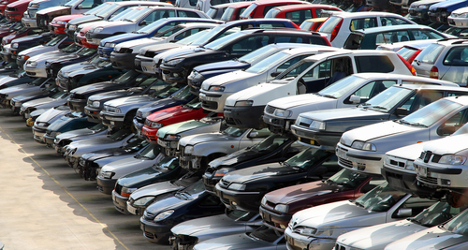Shared-Platform Vehicles Attract Salvage Buyers

Having a shared platform appears to have a positive effect on the auction prices of salvaged vehicles. That’s according to Insurance Auto Auctions' recent 2014 Industry Report Six-Month Update, where it has begun to look into the long-term consequences, both positive and negative, of the ever-increasing trend of cross-platform and modular-platform use in vehicles.
The company’s president and chief executive officer, John Kett, took the time to speak with Auto Remarketing and shared his thoughts regarding the effect of shared platforms on both the salvage side and the manufacturing side of the automotive industry.
“We sell a lot of cars, in basically every market in the U.S. and Canada, so we certainly are seeing it,” Kett said. “We’ve only just begun to study the platform-consolidation aspect of it.
“This is something new that we’re beginning to look at to just really understand what impact it’s going to have,” Kett continued.
In the report, two approaches were made to attempt to analyze how platform sharing affected past IAA auction prices. First, sales prices between vehicles on shared platforms and single platforms were compared to determine the effect on sales prices. Second, a single common example, the Ford Focus, was studied to determine whether moving from a single platform to a shared platform affected its action price.
According to the report, shared-platform vehicles sold for $162.22 more than those on non-shared platforms, on average. In the case of the Focus, however, no statistically significant difference was found when comparing the sale prices before and after the model switched to a shared platform. The report did find a difference in the sales performance of the Focus over the shared-platform time period when compared to the non-shared platform time period, noting an average increase of $673.91 when on a shared platform, but the difference could be due to the model’s 2012 redesign.
Two potential theories were further detailed in the report:
- Buyers find vehicles on shared platforms more valuable because a greater number of the vehicle’s parts can be used to repair other vehicles on that same platform.
- Manufacturers can produce a better-quality product with a shared platform, and that quality is then reflected in auction prices.
The IAA currently utilizes five metrics for evaluating the health of the salvage industry: the Crushed-Car Price Index (CCPI), metal prices, Producer Price Index of Motor Vehicle Parts Manufacturing (PPIMV), Used-Car Price Index (UCPI), and the Index of Foreign Buyers. Platform sharing, while having been used by manufacturers for years, is something Kett never expected to have such an effect on salvage auction prices.
“It’s a much more sophisticated driver of salvage values than I certainly thought when I got into this business 13 years ago,” Kett said. “So it’s one component; it is very hard to isolate the impact of one driver on the value.”
Kett noted that, although manufacturers can possibly make a better vehicle foundation by pooling research and development funds into fewer platforms, there are still inherent risks, some of which we may be seeing today.
“As I look at it, the thing that comes to mind is the recall sort of impact,” Kett said. “If they’re using a very common technique across multiple platforms, if they have an issue with it, I would be concerned that it’s going to affect many more vehicles than it would have in the past, where if it was built specifically for a make or model. Now, if you’ve got it across you’re whole lineup, I think it could really hurt a manufacturer if they had any quality issues.”
Although the evidence is building in favor of the positive effect of cross platforms on salvage prices, Kett noted that it’s something the IAA is going to keep an eye on.
“Our view is that this platform-consolidation is a new trend that we need to pay attention to, to make sure our customers understand what impacts they might have,” Kett said. “We’ll continue to study it and report on it in subsequent editions.”

 View The Latest Edition
View The Latest Edition

